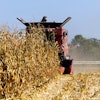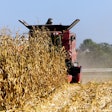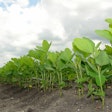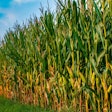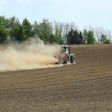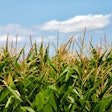
The latest U.S. Drought Monitor report, jointly produced by the National Drought Mitigation Center at the University of Nebraska-Lincoln, the United States Department of Agriculture and the National Oceanic and Atmospheric Administration, reveals a stark contrast in agricultural conditions across the country.
In the southern Plains, farmers and ranchers are grappling with rapidly deteriorating conditions. Texas and Oklahoma have been hit particularly hard, with ferocious dust storms on March 18 causing sharp visibility reductions and increasingly stressful conditions for rangeland, pastures, and winter grains. The U.S. Department of Agriculture reports that by March 23, rangeland and pastures in Texas were rated 71% very poor to poor, reflecting drought at multiple time scales and the impact of recent blowing dust.
The extreme weather has taken a heavy toll on agricultural operations in the region. The drought-monitoring period saw little rain fall since mid-February across Arkansas and portions of neighboring states. While the short-term dryness has been favorable for spring fieldwork, rain will soon be needed across the mid-South for pastures, fall-sown small grains, and recently planted summer crops. In Arkansas, 10% of the corn and 2% of the rice had been planted by March 23, while 7% of the winter wheat had headed.
In stark contrast, California farmers received some positive news. According to the California Department of Water Resources, the average water equivalency of the high-elevation Sierra Nevada snowpack climbed nearly to 25 inches, essentially ensuring a normal seasonal accumulation. This development is particularly significant for the state's agricultural regions, promising improved irrigation water supplies for the upcoming growing season.
The High Plains present a mixed picture for agriculture. South Dakota saw a broad expansion of severe drought (D2), where season-to-date snowfall totals were at least 1 to 2 feet below average. This multi-scale drought is impacting rangeland, pastures, and winter wheat conditions. However, late-season storminess across the northern Intermountain West, including much of northern and western Wyoming, led to improved mountain snowpack and more favorable spring and summer runoff prospects.
In the Midwest, targeted improvements to drought conditions were noted from Iowa to Michigan due to recent precipitation. However, some areas farther north and south saw drought deterioration, most prominently across southern Missouri. A patch of severe drought (D2) was introduced in southwestern Missouri, extending into neighboring areas of northwestern Arkansas and northeastern Oklahoma, potentially impacting crop development in these regions.
Looking ahead, the NWS 6- to 10-day outlook for April 1-5 calls for above-normal precipitation nearly nationwide, with northern and central California and the western Great Basin having the greatest likelihood of experiencing wet conditions. This forecast offers hope for drought-stricken agricultural areas, particularly in the West.
As farmers and ranchers navigate these shifting drought patterns, adaptive strategies in water management and crop selection will be crucial. The varied conditions across the country underscore the complex challenges facing U.S. agriculture in an era of changing climate patterns, highlighting the importance of continued monitoring and responsive agricultural practices.

